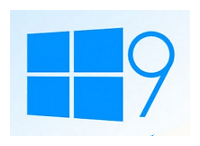Windows 9 is Microsoft’s Last Chance!
 Yep… with Lixux Desktops expanding, especially with the success of the Chromebook, Microsoft had better get Windows 9 right, or they are history!
Yep… with Lixux Desktops expanding, especially with the success of the Chromebook, Microsoft had better get Windows 9 right, or they are history!
Microsoft Mustn’t Blow Its Last Chance to Save Windows
eWeek – By: Mike Elgan – “The foundation of Microsoft’s success as a company is Windows. When PCs went mainstream in the 1990s, Windows was top dog. Microsoft grabbed the lead way back then and hung on to it ever since.
With Windows as the foundation, Microsoft built empires around its Office productivity suite and other application software platforms, along with online services as well as peripheral and system hardware.
Fast forward to the present day and Android and iOS: Android and mobile applications rule the world. In the United States, for example, Android and iOS together hold 94 percent of the smartphone market. Windows Phone owns just 3.6 percent.
The good news is that Microsoft still dominates desktop operating system market share. The bad news is that Microsoft is also losing market share on the desktop, even as PC sales level off.
Microsoft recently dropped barely below 90 percent desktop market share (89.96 percent share). Apple’s OS X is rising, but still far behind with 8.34 percent share.
Microsoft’s biggest current advantages are vendor and consumer lock-in. People have invested in Windows software and hardware and have invested time in mastering Windows and related enterprise platforms.
But these advantages won’t last. New users are focusing on mobile devices, including tablets, and are especially focused on multi-touch user interfaces. Enterprises are embracing Apple mobile devices big time.
Apple will gradually move most of its current desktop and laptop users running OS X over to iOS. And if Microsoft isn’t careful, the enterprise and business markets will follow Apple down this path.
Apple is rumored, for example, to be working on a 13-inch iPad. But even if those rumors are false, there’s no question that Apple will eventually ship big-screen touch devices that work like or even run iOS.
Microsoft’s Best Strategy for Desktop Computing
Microsoft executive Stephen Elop talked on Sept. 2 at Microsoft’s recent Australian Partner Conference about the company’s strategy for competing against Apple in the future.
One part of that strategy is already being implemented, he said: Microsoft is getting ready to mass produce Perceptive Pixel computers, which are those large touch-screen devices you see on the cable news shows. Microsoft acquired Perceptive Pixel in 2012.
The computers that this company makes used to cost about $80,000. Now, they start at around $7,500. (Microsoft sells an 82-inch and a 55-inch Touch Device.) Microsoft is working on ways to drive the cost down further, according to recent news reports. That could involve a combination of smaller-screen-size options, the fall in component prices and the economies of scale that come from higher volumes and mass production.
Microsoft has repeatedly missed opportunities in the past 20 years. The company was late to the Internet, late or wrong on mobile, late to the cloud, late to the mobile media player market, late to the smartphone market and late to the tablet market.”
In almost every case, Microsoft entered into markets after it was too late for even a great product to gain enough market share to make a difference.”